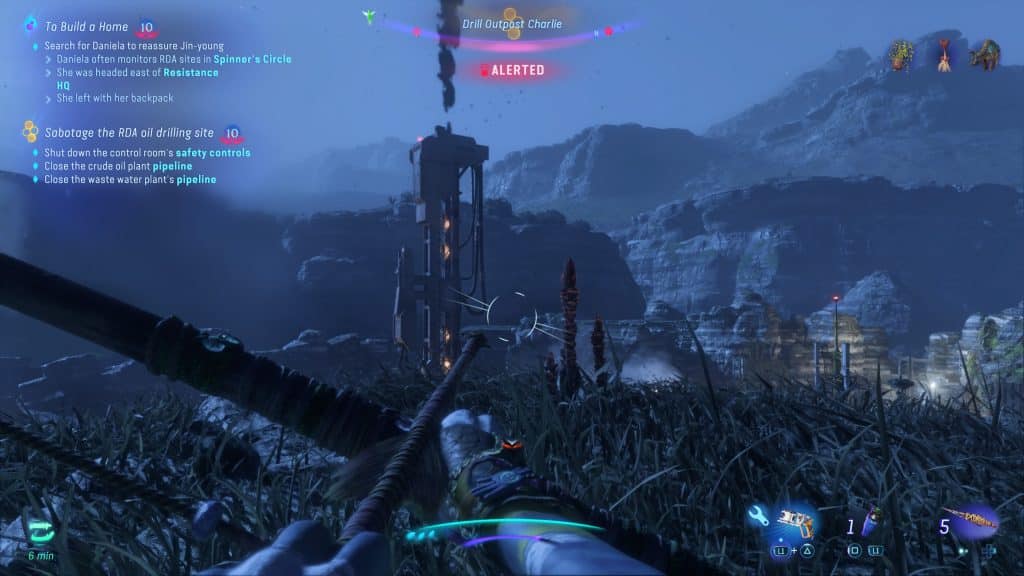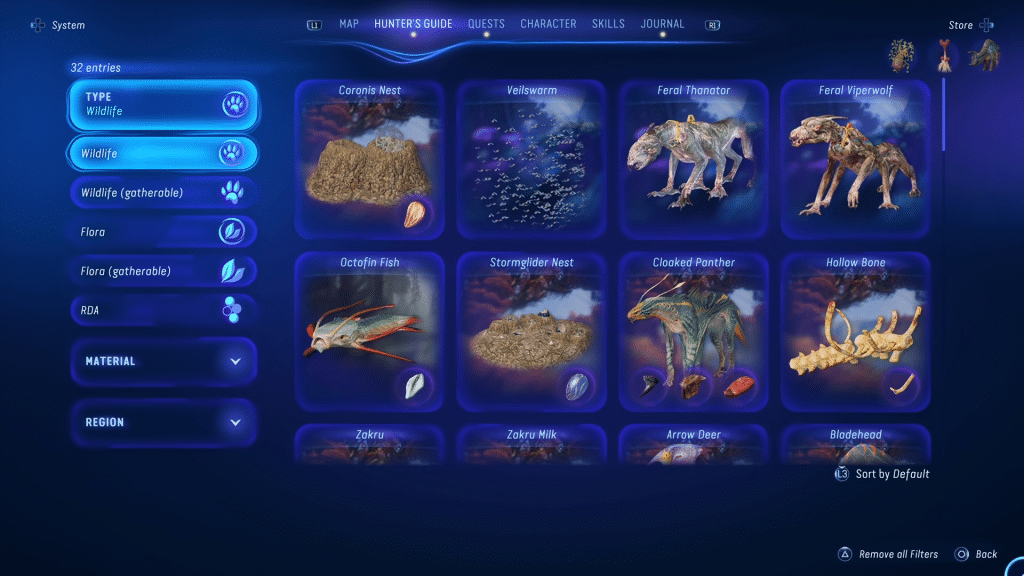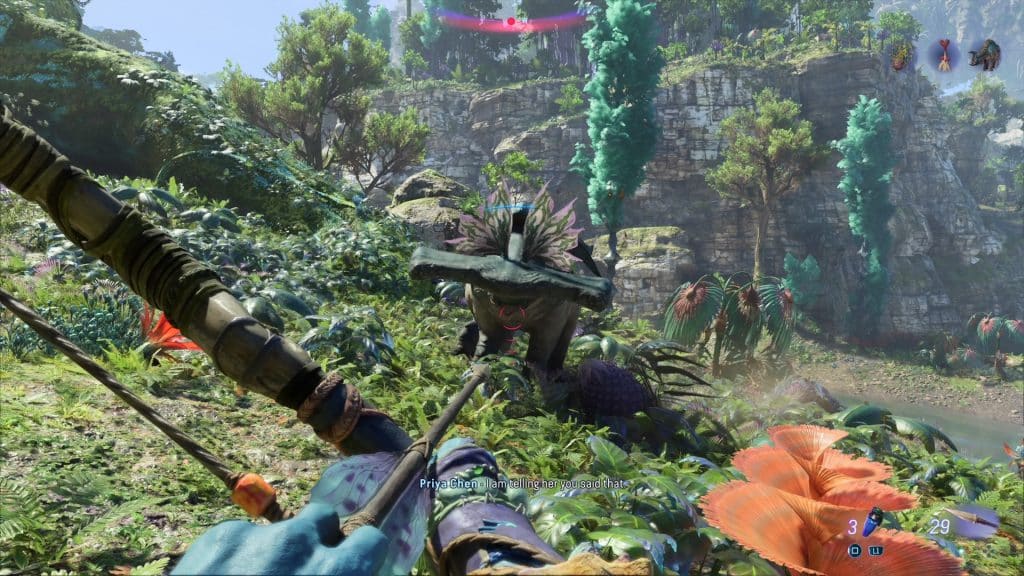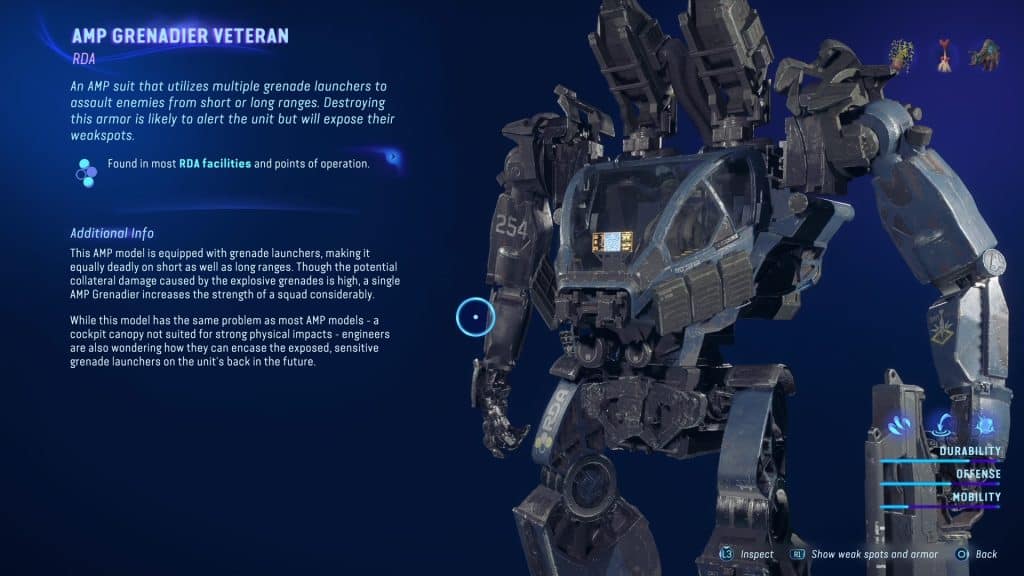Avatar: Frontiers of Pandora is an open-world first-person shooter with light stealth and survival elements developed by Massive Entertainment and published by Ubisoft. Most of the game takes place after the first film’s events and has the player explore and survive the dangers of Pandora as one of the last survivors of the Na’vi Sarentu tribe. The game also features 2-player co-op, allowing you and a friend to play through the entire story together. Despite some initial promise in the game’s prologue, Frontiers of Pandora fails to improve on the stale Ubisoft formula and undermines itself with confusing design decisions at every turn.
Technical
Frontiers of Pandora features various settings and accessibility options to tune audio, controller vibration levels, and HUD elements. The game also offers the choice between favoring quality or performance in the settings menu, however, choosing the quality setting will lock your game at 30 fps for a visual improvement — an improvement so slight I barely noticed it. The settings menu is also where you can choose between guide and explorer for quest structure. The description of explorer mode makes it sound like a minimal HUD immersive mode, but all it does is remove the ability to see quest waypoints by pressing R1, an optional mechanic, to begin with. It also does not remove the quest descriptor at the top left of the screen, which obnoxiously clutters half your view.

Art Direction
Frontiers of Pandora’s art style seeks to reproduce the photorealistic look of the films. While the game does achieve that goal, at times, the beauty of Pandora is hidden under fog and dust. It is like a constant haze or filter in the air that slightly blurs the world and mutes its colors. I didn’t expect the game to look exactly like the movies, but I was very disappointed when the first night in the bioluminescent forests of Pandora looked like a murky fish tank that needed to be cleaned. This dirty aquarium vibe is also present in the menus, which look rushed in their visual design. While the menus are functional, they don’t give the feeling of a connection to nature. Instead, they look more like an interactive touchscreen exhibit at a zoo.

Story
The game’s story has the player create and control an orphaned Na’vi child known only as the Sarentu. The game opens eight years before the first film’s events with the player character and their sister, along with a few other Na’vi children, in a human facility where Dr. Alma Cortez educates them as a part of The Ambassador Program. This program is just a strategy by the Resource Development Administration to brainwash or “civilize” the Na’vi children with things like tribal items and speaking the Na’vu language being forbidden in the facility. Realizing this, the children attempt to make an escape where the main antagonist of the game, RDA Director John Merce, kills your sister in front of you. The game then jumps eight years to the first film’s events, where the RDA is leaving Pandora. Dr. Alma Cortez saves the player from RDA soldiers attempting to kill them and then frozen for another 16 years, just in time for the RDA to return.
Using the school as a prologue is a good idea, drawing from real-life examples like the Native American residential schools from the 17th and 20th centuries. This narrative direction is a bold one that brings light to a genuine part of history that games seldom engage with. Unfortunately, this idea doesn’t get the focus it needs in the main game, and when it does, the game’s message is handicapped by poor voice performance and awkward cutscenes. While the game’s missions focus on the RDA threat, the character’s line delivery feels like they’re in an after-school special. Patrick Abellard’s main character is especially bad, making the Sarentu sound like a naive child instead of the warrior storyteller other characters tell you they are.
The female and nonbinary voice work for the main character is much better. However, it still doesn’t fix the main problem with the game’s story, which is its unwillingness to engage with the horrors of what colonialism entails. The closest the game gets to showing the player the pain and suffering colonialism brings is when the player watches the RDA kill animals in cutscenes. Watching an animal die is sad, but after the third or fourth time, it starts to feel like a cheap trick. Frontiers of Pandora had the opportunity to show the destruction colonialism can cause from the perspective of a native population, which is a perspective few games show. Instead, the overall tone is closer to an episode of Captain Planet, with the character joking on the radio between cutscenes of animals dying in Na’vi’s arms.

Gameplay
If I could describe the gameplay design of Frontiers of Pandora, it would be “confusing.” The game is torn between an immersive open-world survival sim and a more casual shooter. The game’s most impressive feature is how alive the wilderness of Pandora feels. The flora and fauna of the planet act in realistic ways, with prey animals dashing away from you on sight while larger, more aggressive animals might show off a threat display before charging you.
The player character also needs to eat to keep an energy meter full by clean kills of animals and carefully picking fruit during certain times of the day. However, when the player receives their Ikran as a flying mount, all that interaction on the ground is ignored as you simply fly from point A to point B. The player can buy all the food and resources they need at camp, and travel is now much less risky and, by extension, less interesting.
Combat in Frontiers of Pandora is similarly confused. The player can carry up to seven weapons, but you can only have four on your weapon wheel at a time. The weapons include several bows, a bomb slinger, and two firearms. Frontiers’ arsenal isn’t exotic, but it is functional, allowing players to fight effectively at all ranges. The problems start with how gear is integrated into the leveling system.
Frontiers of Pandora has a gear rating system, meaning your level isn’t just determined by XP earned but by the quality of your equipment. This system severely hinders the fun of the game’s combat, with enemies one or two levels higher taking much more damage and being able to gun you down in a second. You might think that direct combat is discouraged and it is more of a stealth game, yet the stealth system is minimal. If you aim at a soldier and miss them, every enemy in that base is alerted to your presence and knows exactly where you are. Breaking the line of sight doesn’t help with enemies like the Grenadier dropping bombs at your feet despite being unable to see you.
This lack of a viable stealth option and those hard-hitting hitscan enemies leave the player with only one real choice, and that is to grind. The best way to fight higher-level enemies is to leave the area until you get strong enough to kill them like you’ve been killing lower-level enemies. The gear system makes all fights tedious or boring as you decimate low-level enemies or get gunned down by one level 20 RDA soldier.

Summary
While playing Avatar: Frontiers of Pandora, I was constantly disappointed. Whether it be the game story, combat, or visuals, it felt like every step forward in a positive direction was followed soon after by two steps back. The game’s positive aspects are still good, and I’m sure diehard fans of the film will enjoy the realistic recreation of Pandora’s wilderness. However, given how flooded the market is with open-world games, I can’t imagine recommending Frontiers of Pandora to someone over the PlayStation’s first-party games like Horizon Zero Dawn.
The Review
Avatar: Frontier's of Pandora
Middling







